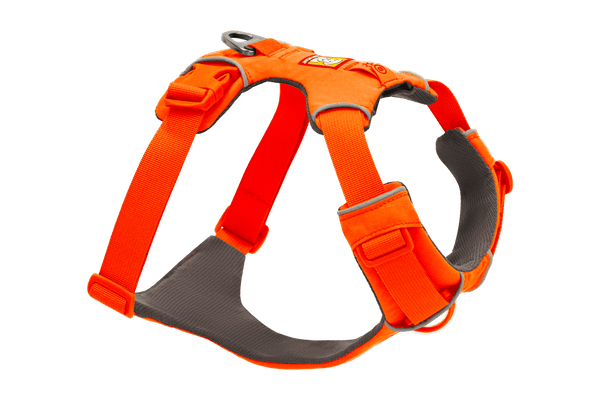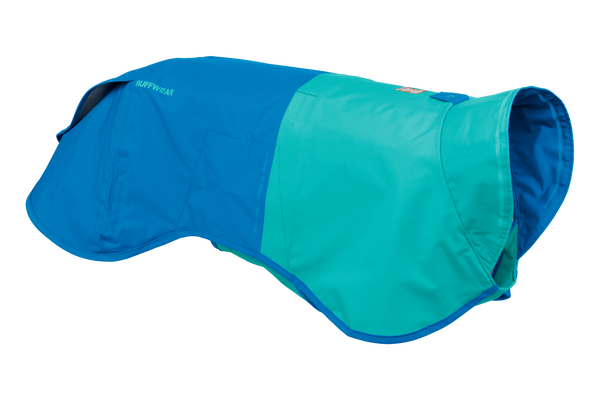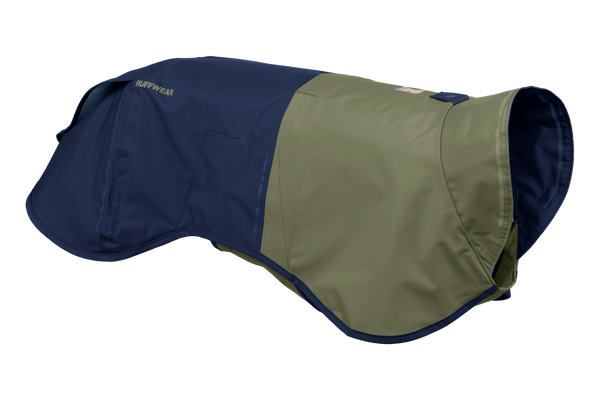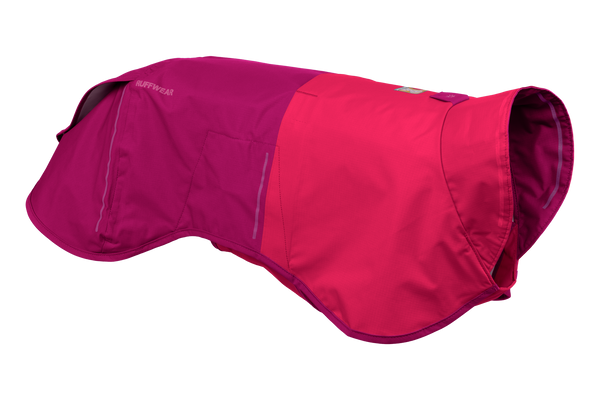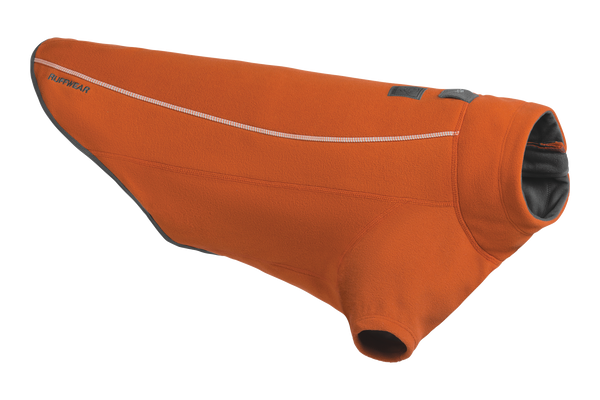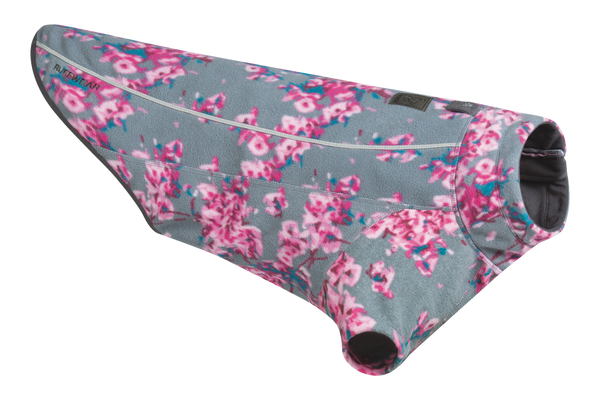Camping mit Hunden auf öffentlichem Grund
Dieser Blog erschien ursprünglich im REI Co-op Journal.
Nehmen Sie Ihre Hunde mit auf Ihr nächstes Abenteuer – in vielen Bereichen unserer öffentlichen Flächen sind Hunde willkommen. Alles, was Sie tun müssen, ist ein wenig Planung.
Fast jedes Jahr treffe ich mich mit Freunden zum Zelten am Steens Mountain, einem abgelegenen Juwel in Oregons Hochwüste, etwa 350 Meilen südöstlich von Portland. Wir schmiegen unsere Zelte in gerade gelb werdende Espen neben einem seltenen Wüstensee, wandern tagsüber zu riesigen, U-förmigen Gletscherschluchten und lachen abends am Lagerfeuer.
Die einzigen, die mehr Spaß haben als wir? Unsere Hunde. Als mein flauschiger Golden Retriever-Samojede-Mischling Isis noch bei uns war, trabte sie am Ende der Hundemeute, balgte sich über Baumstämme und schlängelte sich durch das hüfthohe Wüstenbeifuß. Mein Lieblingswelpe war allerdings schon immer der gelbe Labrador meiner Freundin, Chloe, die die Gruppe bei jeder Gelegenheit meidet, um ihrem Glück nachzugehen – endlose Kreise im See zu schwimmen.
Camping mit Hunden macht das Abenteuer noch spannender. Ihre Freude erinnert uns ständig daran, den Moment zu genießen. Aber es ist eine Tatsache, dass man sich auf öffentlichem Grund aufhält: Camping mit Hunden unterliegt anderen Regeln und diese können je nach Reiseziel unterschiedlich sein.
Im Allgemeinen sind Hunde auf Campingplätzen auf öffentlichem Grund willkommen und es sind mehrere Hunde pro Stellplatz erlaubt. Die Vorschriften für das Campen in abgelegenen Gegenden oder auf verstreuten Campingplätzen können jedoch je nach Standort und der Behörde, die das Land verwaltet, unterschiedlich sein. Außerdem sind einige Wanderwege hundefreundlicher als andere, sodass Ihre Pläne für Wanderungen, Radtouren oder Erkundungen am Tag entscheidend für Ihre Wahl des Übernachtungsorts sind.
Mit ein wenig Recherche und Planung können Sie für sich, Ihren Hund und Ihre Mitcamper ein schöneres Erlebnis gewährleisten.

Nationalparks
In vielen Nationalparks ist der Besuch mit Hund gestattet. Dazu können erschlossene Bereiche und Unterkünfte sowie eine große Anzahl an Wanderwegen und Campingplätzen gehören.
Die entscheidende Frage ist dann: Welche Abenteuer möchten Sie erleben, bevor Sie sich auf die Isomatte legen? Je nach Park gelten unterschiedliche Regeln, ob Ihr Hund Sie bei Ihren Ausflügen begleiten darf. Und Ihr Hund wird wahrscheinlich Ihr ständiger Begleiter sein – alle Landverwaltungsbehörden sagen, dass es keine Option ist, Ihren Hund allein auf dem Campingplatz zu lassen.
Beispielsweise sind Hunde auf den Wanderwegen im Rocky Mountain National Park nicht erlaubt. Aber Ihr vierbeiniger Begleiter wird die 100 Meilen hundefreundlicher Wanderwege im Acadia National Park lieben. Regeln für Hunde sind auf der Website jedes Parks aufgeführt, und diese Karte des National Park Service ist eine hilfreiche Quelle, um mehr über die Regeln im gesamten Parksystem zu erfahren.
Was das Hinterland betrifft, ist das Campen mit Hunden in den meisten Nationalparks nicht gestattet. Glücklicherweise sind Hunde auf Campingplätzen im Vorderland im Großen und Ganzen willkommen, darunter einige Campingplätze in Yellowstone, Grand Canyon und Yosemite. Es gibt jedoch immer noch Ausnahme-Campingplätze, also erkundigen Sie sich vorher. Auf dem Kulanaokuaiki Campground des Hawai'i Volcanoes National Park sind beispielsweise keine Hunde erlaubt, um die gefährdete Nene, die seltenste Gans der Welt, zu schützen.
Staatliche und lokale Parks
Für staatliche und lokale Parks gelten die gleichen Richtlinien wie für Nationalparks: Die Regeln sind unterschiedlich, Sie müssen also Ihre Tagespläne berücksichtigen und sich bei der Behörde erkundigen, die das Gelände verwaltet.
Dies gilt insbesondere, wenn Ihr Ziel das Wasser ist. In den Virginia State Parks beispielsweise sind Hunde an öffentlichen Stränden verboten. Im California State Parks System sind an bestimmten Stränden Hunde erlaubt, an anderen jedoch nicht, da Hygiene- und Wildtierbedenken bestehen. Im Monterey District des Systems sind die Strände zum Schutz des bedrohten westlichen Schneehühners weitgehend hundefrei.
Als Faustregel gilt, dass Hunde überall erlaubt sind, wo Autos hinfahren dürfen. Auf Campingplätzen sind Hunde daher normalerweise erlaubt. Auch in staatlichen und lokalen Parks gibt es regelmäßig Wege für Hunde. Und einige von ihnen bieten hundespezifische Einrichtungen in ihren Parks. Der Cherry Creek State Park in Colorado ist ein solcher Park, der neben einem ganzjährig geöffneten hundefreundlichen Campingplatz einen 107 Hektar großen, eingezäunten Bereich ohne Leine und mit Zugang zum Wasser bietet.
Mehrere Bundesstaaten und Landkreise haben Informationen zum Thema Hunde auf einer Webseite zusammengestellt, um Ihnen die Auswahl Ihres Campingziels zu erleichtern. Gehen Sie auf die Homepage der Organisation und suchen Sie nach „Hunden“ – von Alabama bis Wisconsin werden häufig Leitfäden angezeigt.

Nationale Wälder und Amt für Landmanagement Land
Der US Forest Service und das Bureau of Land Management betreuen zusammen mehr als 440 Millionen Hektar öffentliches Land. Ein Großteil dieser Fläche ist hundefreundlich, was bedeutet, dass Sie reichlich Gelegenheit für Abenteuer mit Ihrem Vierbeiner haben.
Rucksackreisen sind eine wunderbare Möglichkeit für Sie und Ihren Hund, Einsamkeit zu erleben. Für einige abgelegene und verstreute Campingplätze bietet der Forest Service oder BLM als einzige Richtlinie den gesunden Menschenverstand. Sie möchten tief ins Hinterland auf öffentlichem Land gehen, das vom Forest Service verwaltet wird? Dann kann Ihr Hund im Basislager möglicherweise ohne Leine bleiben, wenn er oder sie auf Sprachbefehle reagiert und in der Nähe bleibt. Sie campen im Frühling an einem Fluss in der Wüste? Das verräterische Rasselgeräusch bedeutet, dass es Zeit ist, eine Leine zu verwenden.
In anderen Gegenden, in denen Sie abseits eines Campingplatzes mit dem Rucksack oder Auto campen möchten, gelten bestimmte Regeln für Hunde. Dies gilt insbesondere für stark beanspruchte oder wildlebende Gebiete. In der Sawtooth Wilderness außerhalb von Sun Valley, Idaho, verlangt der Forstdienst beispielsweise, dass Hunde in abgelegenen Gegenden an der Leine bleiben, vom 1. Juli bis zum Labor Day sind auf Wanderwegen Leinen vorgeschrieben und in einem Abschnitt der Wildnis sind Hunde überhaupt nicht erlaubt.
Das Wichtigste ist, sich bei den örtlichen Niederlassungen dieser Behörden zu erkundigen, da diese die Regeln weitgehend festlegen. Auch im Hinterland sollten Sie immer eine Leine dabei haben – beispielsweise die leicht zu befestigende Flat Out™ Leine . Außerdem sollte Ihr Hund ein Halsband mit Erkennungsmarke tragen, z. B. das Crag™ Halsband , für den Fall, dass er von Ihrer Gruppe getrennt wird.
Tipps zum Campen mit Hund
Die Regeln für das Campen mit dem Auto auf ausgebauten Campingplätzen, von Forest Service- und BLM-Geländen bis hin zu National- und State Parks, sind ähnlich. Hier sind die Grundlagen:
Ihr Hund ist Ihr ständiger Begleiter. Lassen Sie Ihren Welpen nicht allein im Camp, wenn Sie zu dieser Tageswanderung aufbrechen, egal ob er im Camp angebunden oder im Zelt oder Auto gehalten wird. Das ist nicht nur potenziell störend für andere Camper, es könnte auch Ihren vierbeinigen Begleiter gefährden. Das Wetter kann sich schnell ändern, Wildtiere können durchstreifen oder andere unvorhergesehene Umstände können in Ihrer Abwesenheit eintreten.
Halten Sie Ihren Hund auf dem Campingplatz an der Leine. Im Freien wimmelt es für Ihren Hund von Versuchungen, vom verführerischen Duft der brutzelnden Steaks Ihres Nachbarn bis hin zu den huschenden Eichhörnchen, die sich perfekt für eine gute Jagd eignen würden. Deshalb ist es auf Campingplätzen fast überall vorgeschrieben, dass Hunde an der Leine bleiben. Knoten-a-Hitch™ ist ein System zum Anbinden von Hunden, das so konzipiert ist, dass sie im Camp an der Leine herumlaufen können.
Benutzen Sie Hundekotbeutel. Wenden Sie die „Hinterlassen Sie keine Spuren“-Ethik auf Ihre Hunde an. Da immer mehr Menschen die Natur mit ihren Hunden genießen, gibt es mehr Hundekot im Wald. Leider kann dies der Umwelt schaden: Die City of Boulder Open Space and Mountain Parks nennt Boden- und Wasserverschmutzung durch Bakterien und Parasiten sowie die Verbreitung von schädlichem Unkraut als Gründe für die Aufnahme Sammeltaschen in Ihrem Kit.
Versuchen Sie, mit Ihrem Hund im selben Bett zu schlafen. Da nachts wahrscheinlich Wildtiere unterwegs sind, schreiben die Regeln normalerweise vor, dass Hunde entweder im Auto oder im Zelt bei Ihnen schlafen müssen. Das Letzte, was Sie wollen, ist, dass Ihr Welpe einem Stinktier oder einem Kojote begegnet. Wenn er bei Ihnen schläft, ist er sicher und hoffentlich auch ruhig. Schlafausrüstung für Hunde kann das Erlebnis für alle angenehm und warm machen.
Packen Sie Proviant ein. Ihr Set sollte einen Napf, Wasser und Trockenfutter enthalten. Wenn Sie wandern oder mit dem Rucksack unterwegs sind, sollten Sie einen Hunderucksack mitnehmen, um alles zu tragen.
Bringen Sie Futter nur während der Mahlzeiten heraus. Wenn Sie Trockenfutter draußen lassen, lernen andere Wildtiere, dass Campingplätze leckere Orte zum Abhängen sind. Verwenden Sie für Knabberer eine Schüssel, die oben geschlossen ist, wie die Quencher Cinch Top ™, um Essensreste zwischen den Mahlzeiten vor der Tierwelt zu schützen.
Genieße die gemeinsame Zeit. Während dieser kalten Nächte in der Wüste war es umso schöner, in mein Zelt zu kriechen, während mein warmer Welpe sich zu meinen Füßen zusammenrollte. Und mit einem pelzigen Schubs ins Gesicht sorgte sie immer dafür, dass auch ich wach war, um den Morgen zu begrüßen. Ich war froh – die frische Luft, der heiße Kaffee und das goldene Licht waren es immer wert.
